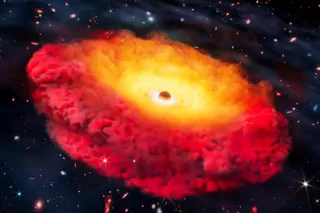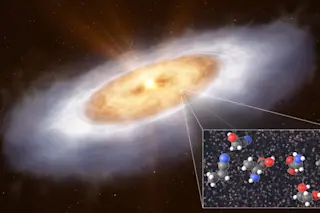Every large galaxy has a supermassive black hole at its center. And some of those black holes are actively ejecting huge amounts of high-energy light out into the cosmos.
Astronomers divide some of these active galaxies, which otherwise look like normal spirals, into two types, so-called Seyfert 1 and Seyfert 2 galaxies. Seyfert 1 galaxies have distinctive light signatures that emerge from the fast-moving material just outside the black hole. Seyfert 2s lack these signals.
But for three decades now, astronomers have suspected that these two types of galaxies might in fact be the same, we’re just seeing them from different angles. The thought was that a dusty ring around the black hole could hide certain features, making a Seyfert 1 appear like a Seyfert 2.
However, a few stubborn galaxies persisted in hiding those features apparently without any dust ring. That made some astronomers think there might really be ...














